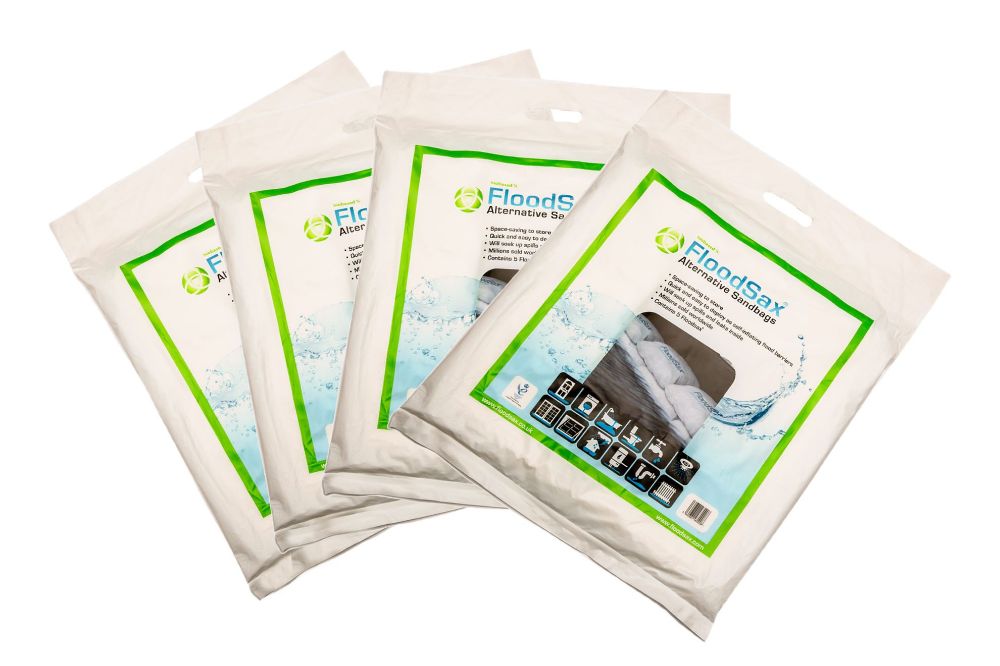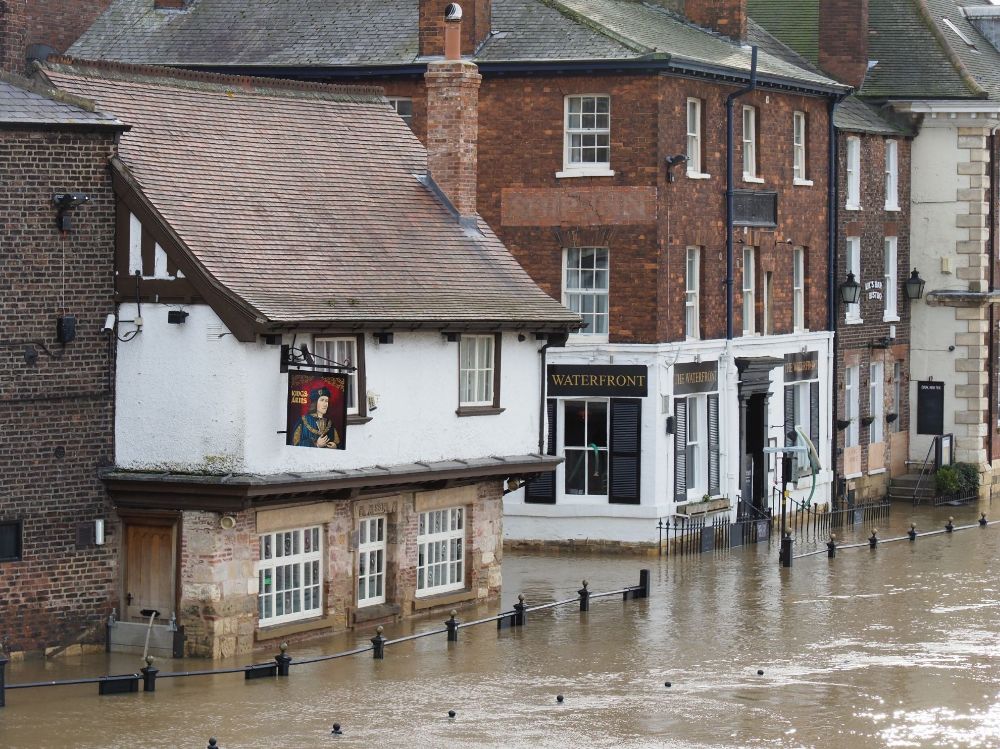How this £140 box of FloodSax alternative sandbags can save you claiming tens of thousands of pounds on your flood insurance
Flooding is the worst disaster that can befall a home or business as the damage is often colossal with insurance claims usually topping £30,000.
Yet just one box of FloodSax alternative sandbags costing £140 and containing four packs of 5 FloodSax can protect several doors from floodwater and save you a catastrophic amount of damage. They are also a multi-purpose and flexible product so can also be used inside to soak up drips, leaks, spills and floods.

In their dry state FloodSax resemble pillowcases with a large and ultra-slim surface area so can be slipped under leaking pipes in the hardest-to-reach places. They will then absorb the water so it causes no damage.
To transform them into sandbags simply immerse them in water which the gelling polymer inside the FloodSax absorbs and retains so it resembles a traditional sandbag to become a resilient flood barrier. Tests have show that a wall of FloodSax can hold back 12 tonnes of water. Click here to read more about that.
According to the Association of British Insurers (ABI), the average claim for a flooded house is £31,000 and a business is £70,000 – that’s seven times higher than the average non flood claim.
This includes burglaries which is why floods are known as “the thief who takes everything.”
Flooding is the greatest natural disaster risk in the UK with an estimated 1 in 6 properties in England and Wales, 1 in 11 properties in Scotland and 1 in 34 properties in Northern Ireland now at risk of flooding. Six of the 10 wettest years on record have occurred since 1998 so climate change can be seen to be having a major impact on this.
Sadly, many businesses never reopen after a severe flood and the reason is that water damages everything. Here is a brief insight into the horrendous disruption it will cause and what will need doing to repair it.

Flooded homes and businesses are potentially dangerous, especially if you need to go back in to salvage equipment or to retrieve vital documents.
You’ll need to make sure the gas and electricity is fully switched off – the risk of electrocution is a very real danger – and be aware the water will be badly contaminated with all kinds of bugs and nasties and there will also be debris lurking beneath the surface.
Then loss adjusters are likely to get involved before renovation work can even begin.
That will be delayed even further as the building will then need time to dry out – and this could take weeks or even several months depending on the extent of the water damage.
Finally, the renovation work can begin once a builder has been appointed – but bear in mind builders will be in very high demand if an area has been flooded so that could lead to further delays.
Then costs are spiralling – some raw materials have doubled in price in recent months due to the pandemic while other products are in very short supply or you simply can’t get hold of them at all.
So, after all this is done, it’s not unusual for a business to be shut for a year or more after a flood or people to be living away from home for a similar amount of time.
Businesses get hit even further by flooding.
Your may have to lay off your workforce and some will never return. The impact on their lives could be horrendous too.
Your profits will probably nosedive as you’ll either have to relocate or, if feasible, just run the business online.
When you get going again you’ll probably need to invest heavily in advertising and promotions to let customers know you’re back in action.
Suddenly the relatively inexpensive cost of flood prevention equipment such as FloodSax sandless sandbags seems to be exceptionally good value for money.
